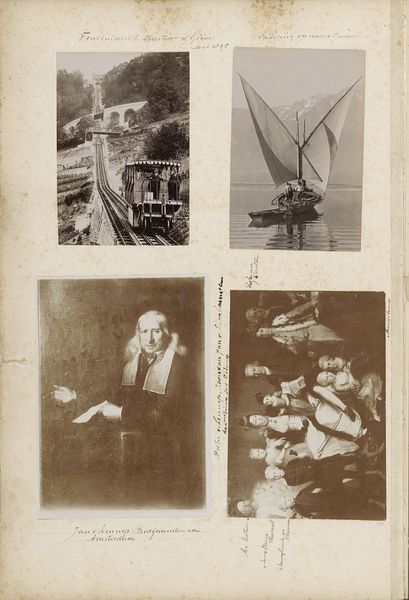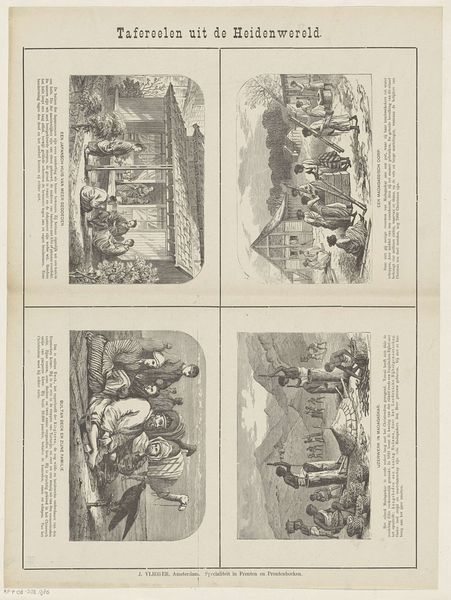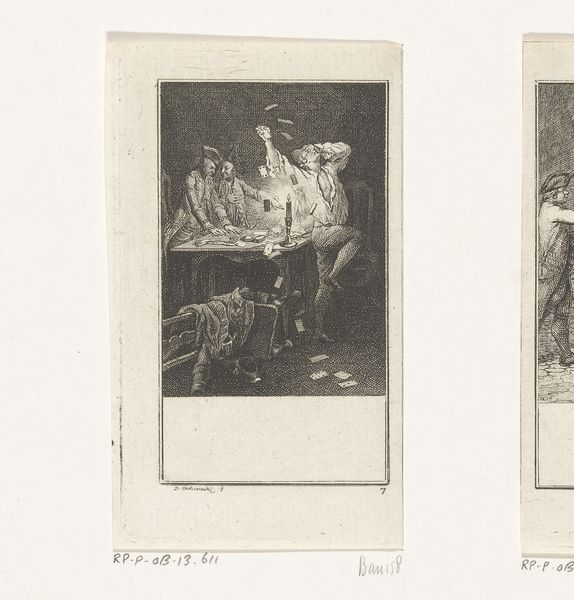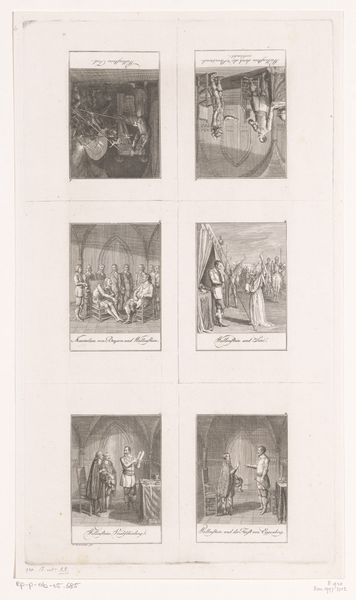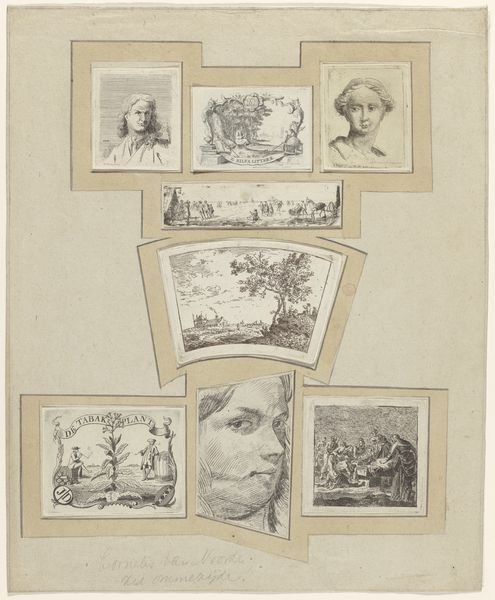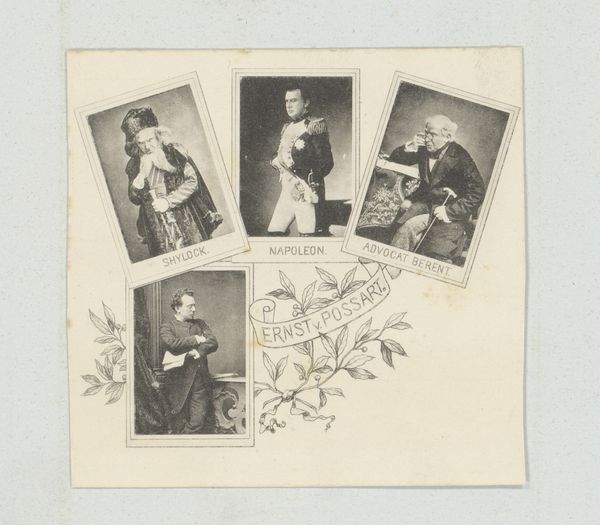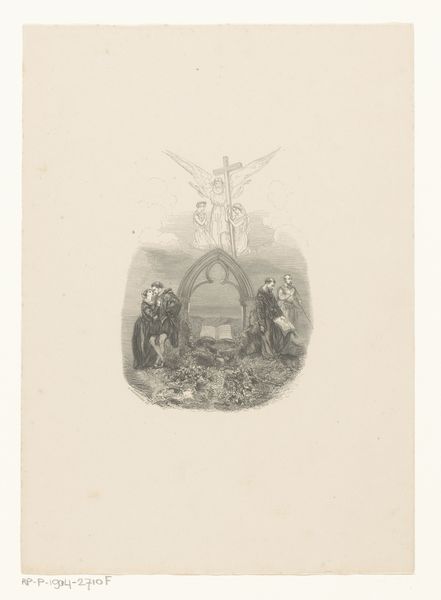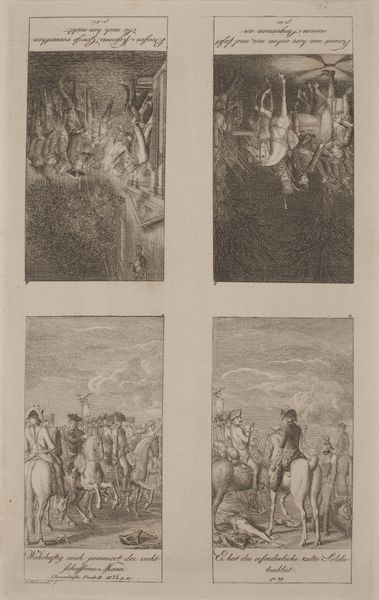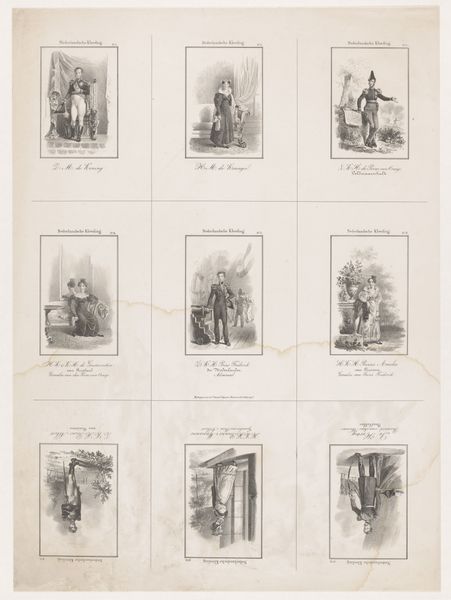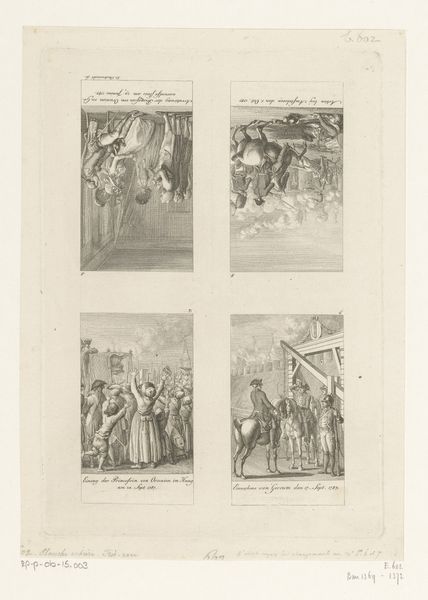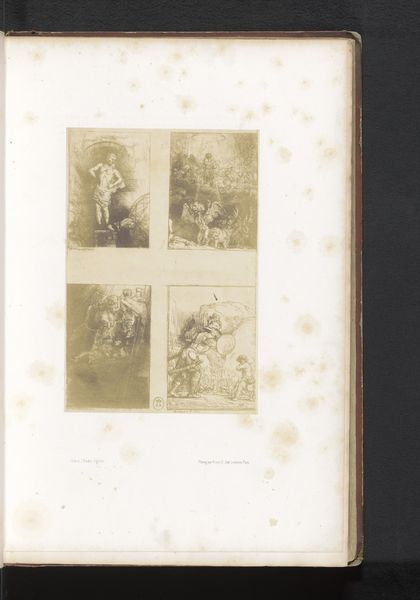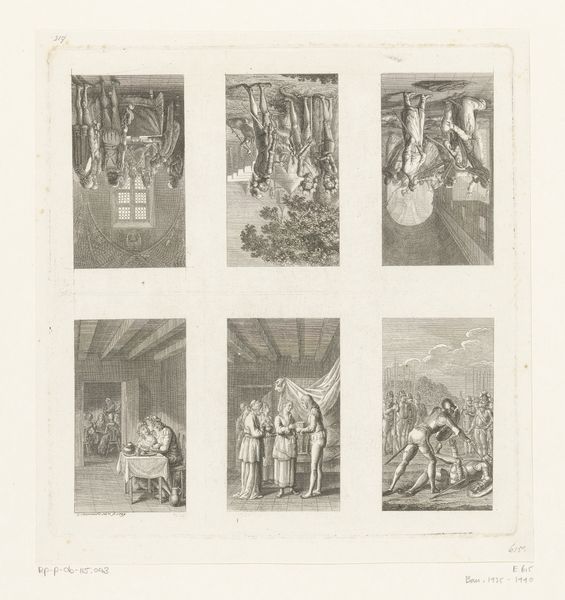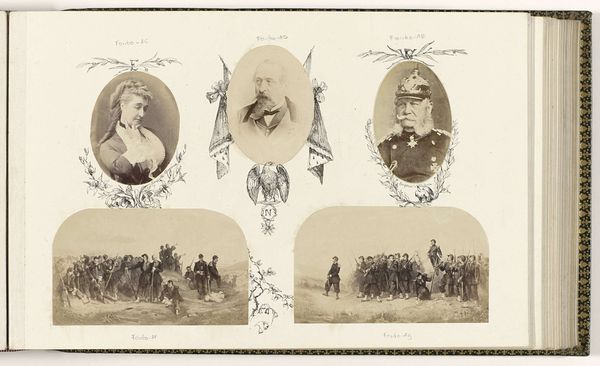
Twee militaire voorstellingen en tweemaal het portret van Hermann Johann Ernst von Manstein 1796
0:00
0:00
print, engraving
#
portrait
#
neoclacissism
# print
#
old engraving style
#
genre-painting
#
history-painting
#
engraving
Dimensions: height 218 mm, width 132 mm
Copyright: Rijks Museum: Open Domain
Curator: This print by Daniel Nikolaus Chodowiecki, created in 1796, is entitled 'Twee militaire voorstellingen en tweemaal het portret van Hermann Johann Ernst von Manstein'. It is currently held at the Rijksmuseum. Editor: My first impression is of a rather formal, almost clinical arrangement. The two portraits flank scenes of military action, creating a contrast between the individual and the collective. There’s a starkness to the engravings that speaks to the precision and discipline of the era. Curator: Precisely! The choice of engraving speaks volumes about the process and context. This printmaking method, requiring meticulous labor and specific tools, facilitated the mass production and dissemination of imagery during a time of burgeoning nationalism. Each line is a deliberate act of making and circulation. Editor: And within those deliberate lines lie potent symbols. The portrait of von Manstein, repeated, elevates him to an almost iconic status. The military scenes depict acts of heroism, but also violence and perhaps sacrifice. What specific stories were these images intended to tell about warfare and leadership? Curator: The narrative seems focused on legitimizing power structures and memorializing military achievements, fitting the themes of history and genre painting found within the Neoclassical art movement. Look closely at the rendering, for example. Chodowiecki is referencing traditional artistic conventions in a new industrialized art setting. Editor: Yes, the stylistic elements hearken back to classical ideals of order and reason, while the imagery served as a vehicle for constructing a sense of national identity and valor. I find myself wondering about the emotional impact on contemporary viewers, what associations were sparked. Curator: Engravings like these were readily available for broader consumption compared to traditional oil paintings, therefore we might think about them as almost functional images. They would exist within private homes, in journals and other spaces as documentation, but they are clearly trying to act as “art”. Editor: So, what we initially see as a clinical arrangement becomes a carefully constructed statement. The artist is working with specific materials and making conscious decisions that weave these symbols together. It really shows us how powerful art can be at the intersection of commemoration and fabrication. Curator: Indeed. Reflecting on Chodowiecki’s work, it’s fascinating to consider how artistic production, particularly within accessible mediums like engraving, played a vital role in communicating, shaping and affirming ideologies through both literal processes and iconography.
Comments
No comments
Be the first to comment and join the conversation on the ultimate creative platform.
